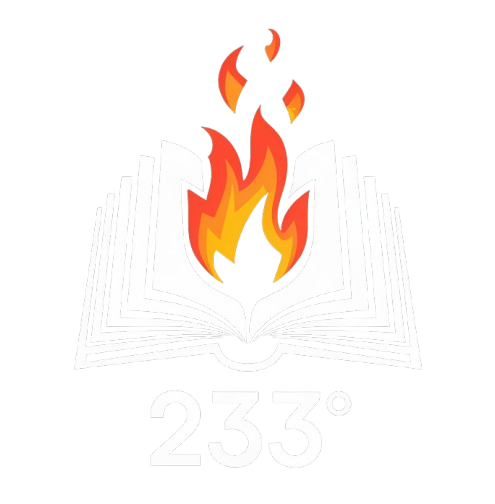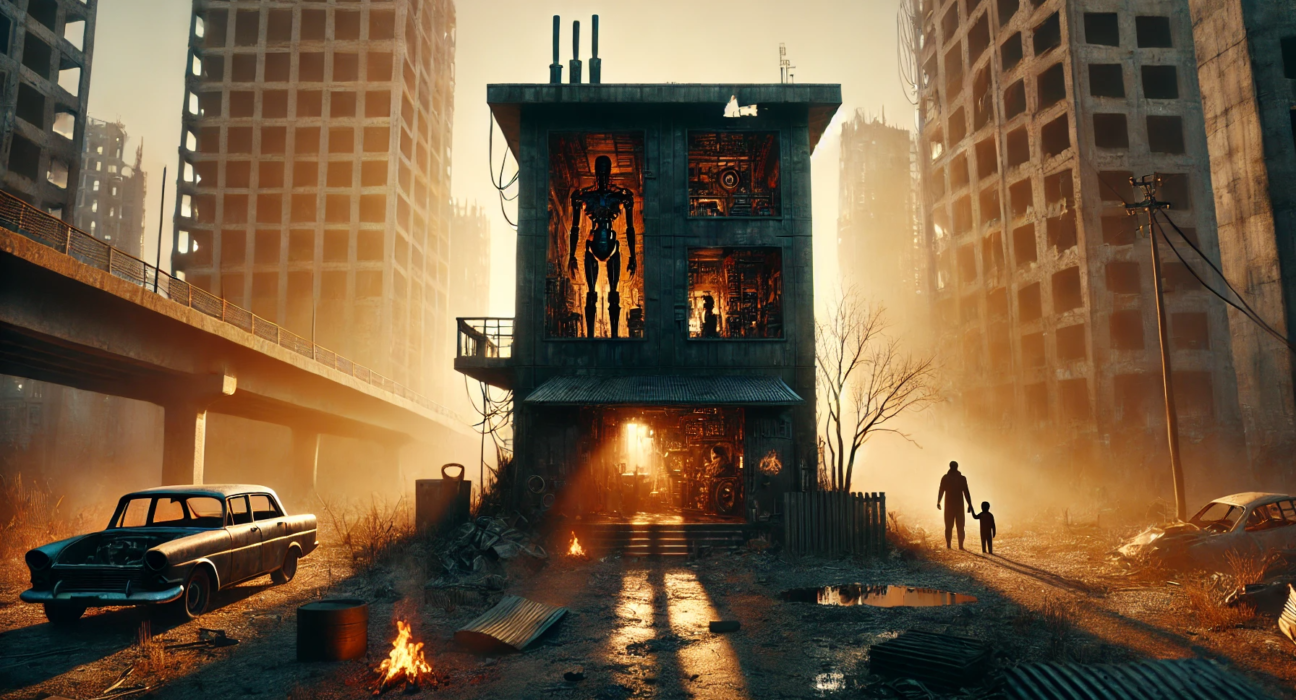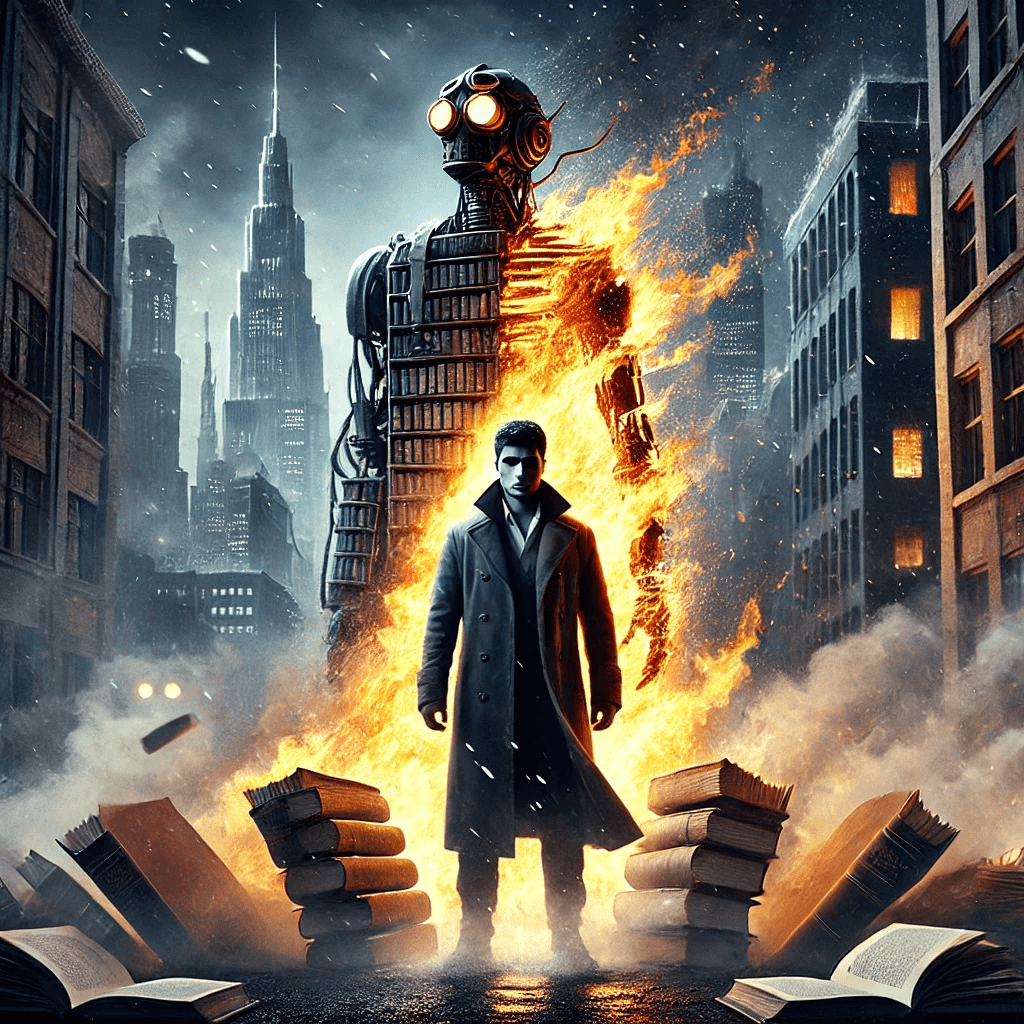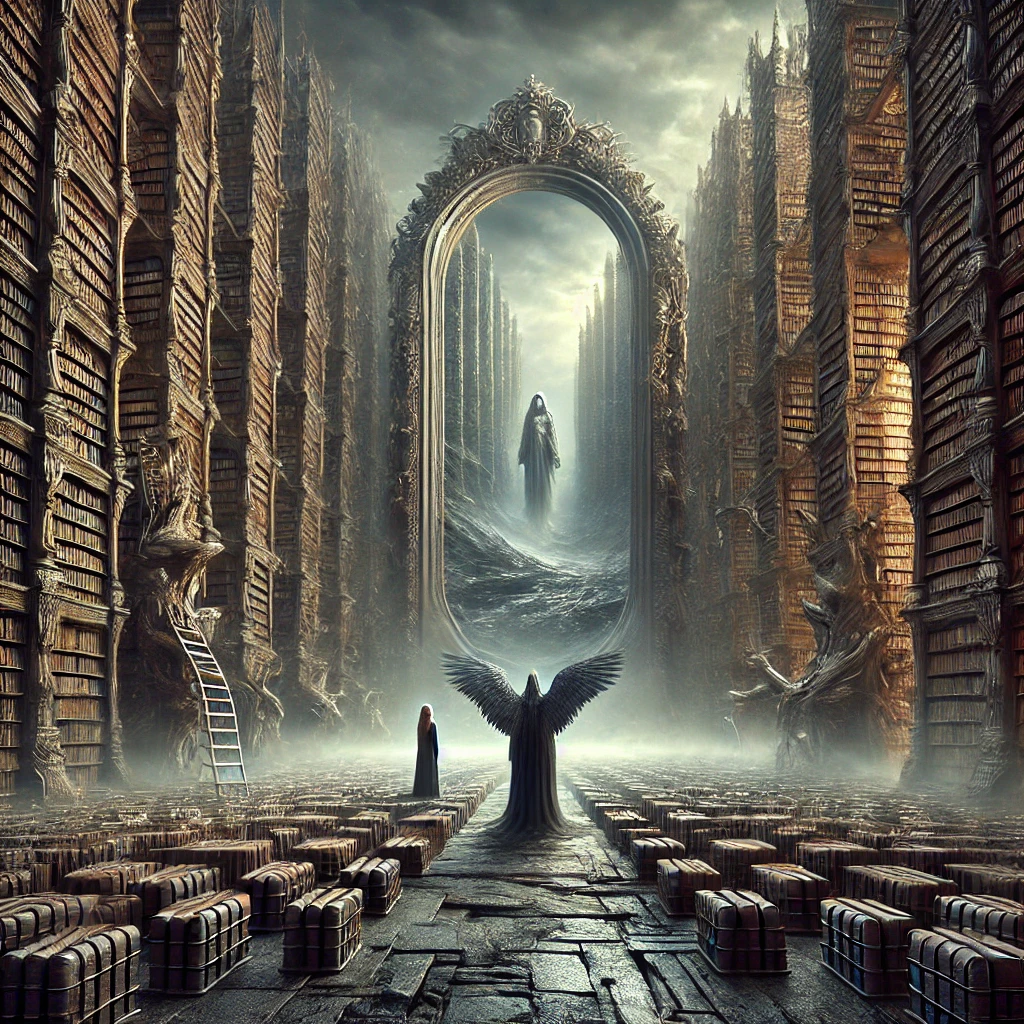“There Will Come Soft Rains” by Ray Bradbury, first published in 1950, is a haunting short story from his celebrated collection The Martian Chronicles. Set in a post-apocalyptic future, the story unfolds in a fully automated house, continuing its daily routines in a world devoid of human life. The narrative draws its title from a poem by Sara Teasdale, which highlights nature’s indifference to humanity’s demise, amplifying the tale’s poignant themes.
Plot Summary
In the city of Allendale, California, on August 4, 2026, a voice-clock sings out, urging the unseen occupants of a house to rise. The house, an intricate marvel of technology, hums with life, operating as if its human inhabitants are still present. It prepares breakfast, announces the date and special occasions, and tends to its endless duties. Yet, the house stands eerily alone in a landscape of rubble and ash, the sole structure left in a city devastated by nuclear destruction.
As the day unfolds, the house adheres to its meticulous schedule. Mechanized arms scrape uneaten food into the sink, while cleaning robots scurry through rooms, whisking away invisible dust. The walls echo with a vibrant, programmed life, but no footsteps, voices, or laughter disturb its mechanical routine. Outside, the lawn sprinklers spin, watering the charred remnants of a once-thriving garden. On the west wall, five silhouettes—etched into the surface by a searing flash—remain as ghostly reminders of a family that once lived there: a man mowing the lawn, a woman bending to pick flowers, a boy leaping with upraised arms, a girl poised to catch a ball.
At noon, the house opens its door to a dog, thin and trembling, its body a fragile skeleton draped in matted fur. Once robust and well-fed, the dog is now sickly and feral, a pitiful remnant of the world that once thrived. It pads through the house, leaving muddy tracks on the pristine floors. Desperate and confused, it sniffs for food and companions that are no longer there. Finally, it succumbs to exhaustion and dies in the parlor. The house, indifferent to this fleeting visitor, dispatches its cleaning robots to remove the body. By mid-afternoon, no trace of the dog remains.
The house continues its rituals. It unfolds bridge tables on the patio and lays out refreshments, though no hands are present to enjoy them. In the nursery, walls come alive with luminous images of wild animals and serene jungles, a vivid spectacle of engineered imagination. Yet the vibrant projections serve no purpose, their audience long gone. Time marches on, and the house, like a dutiful caretaker, carries on with its unyielding schedule.
As evening falls, the house begins to prepare for the night. Beds warm themselves, and the study offers a selection of poetry. With no one to respond, the house chooses a poem by Sara Teasdale, its mechanical voice reciting verses about the enduring serenity of nature, indifferent to humanity’s fate. The poem resonates with grim irony, its words underscoring the house’s lonely existence and the silent, shattered world outside.
At ten o’clock, the harmony of the house is shattered. A tree branch, weakened by time and weather, crashes through a kitchen window. Cleaning solvent spills onto the stove, igniting a fire that spreads with alarming speed. The house springs to life in a frantic attempt to save itself. Water pumps spray from the ceiling, robotic arms slam doors, and chemical dispensers release streams of green foam. Yet, despite its advanced systems, the house is no match for the relentless blaze.
The fire consumes room after room, devouring treasured artworks and furnishings. The nursery’s animated jungle burns away, its once-vivid animals reduced to ash. The house’s mechanisms continue to fight, but the fire’s fury overwhelms them. Pumps fail, reserves are depleted, and the flames climb higher, tearing through the house’s structure. Even as the fire reduces the house to a skeletal frame, its systems persist in their routines—voices announce the time, phantom machines serve breakfast, and cleaning robots dart about futilely.
As dawn breaks, the ruins of the house smolder in silence. Only one wall remains upright amidst the rubble. From it, a lone voice continues to declare the date, an echo of the house’s former vitality. The sun rises on the desolate scene, illuminating the final remnants of a world that once was.
Main Characters
- The Automated House: The story’s central “character,” the house, functions as a fully automated marvel of technology. It continues its programmed duties with precision, unaware that the human inhabitants it serves are gone. The house symbolizes humanity’s hubris and the cold efficiency of technology devoid of purpose or soul.
- The Dog: A skeletal, sickly pet, it serves as a fleeting remnant of the human world. Its brief presence underscores the desolation and loss in the narrative, as it succumbs to neglect and starvation.
- The Fire: An almost sentient force that consumes the house, the fire represents both destruction and the uncontrollable forces of nature, juxtaposing humanity’s frailty against the power of the elements.
Theme
- Technology and Autonomy: The story explores the dangers of overreliance on technology, showing a world where human life is erased, but machines carry on with meaningless routines.
- Human Fragility and Hubris: Bradbury juxtaposes the house’s technological marvel with its inability to prevent the collapse of human civilization, a poignant commentary on humanity’s misplaced priorities.
- Nature’s Indifference: The poem by Sara Teasdale, recited by the house, underscores nature’s lack of concern for human affairs, portraying a world that continues undisturbed despite mankind’s extinction.
- Isolation and Loss: The emptiness of the house and the futility of its actions evoke a sense of profound isolation, reflecting the emotional and physical void left by humanity’s absence.
Writing Style and Tone
Ray Bradbury’s writing in “There Will Come Soft Rains” is both poetic and chillingly precise. His descriptive prose imbues the mundane routines of the house with a surreal, almost eerie beauty. The narrative flows with lyrical elegance, turning ordinary details into poignant metaphors for loss and futility. His use of imagery, such as the charred silhouettes of the family on the house’s wall, conveys profound emotion with stark economy.
The tone is somber and reflective, evoking a sense of mourning for humanity’s self-inflicted demise. Bradbury masterfully blends detachment with an undercurrent of irony—machines, created by humans for convenience, persist long after their creators are gone, continuing rituals stripped of meaning. The story’s climax, as the house succumbs to fire, delivers a tragic, almost operatic finality, reinforcing the inevitability of nature’s dominance over artificial constructs.
We hope this summary has sparked your interest and would appreciate you following Celsius 233 on social media:
There’s a treasure trove of other fascinating book summaries waiting for you. Check out our collection of stories that inspire, thrill, and provoke thought, just like this one by checking out the Book Shelf or the Library
Remember, while our summaries capture the essence, they can never replace the full experience of reading the book. If this summary intrigued you, consider diving into the complete story – buy the book and immerse yourself in the author’s original work.
If you want to request a book summary, click here.
When Saurabh is not working/watching football/reading books/traveling, you can reach him via Twitter/X, LinkedIn, or Threads
Restart reading!








